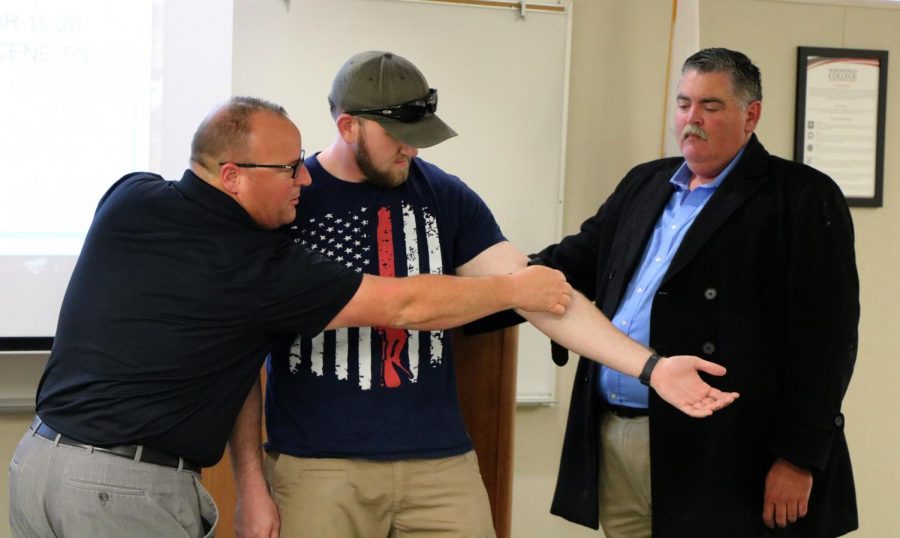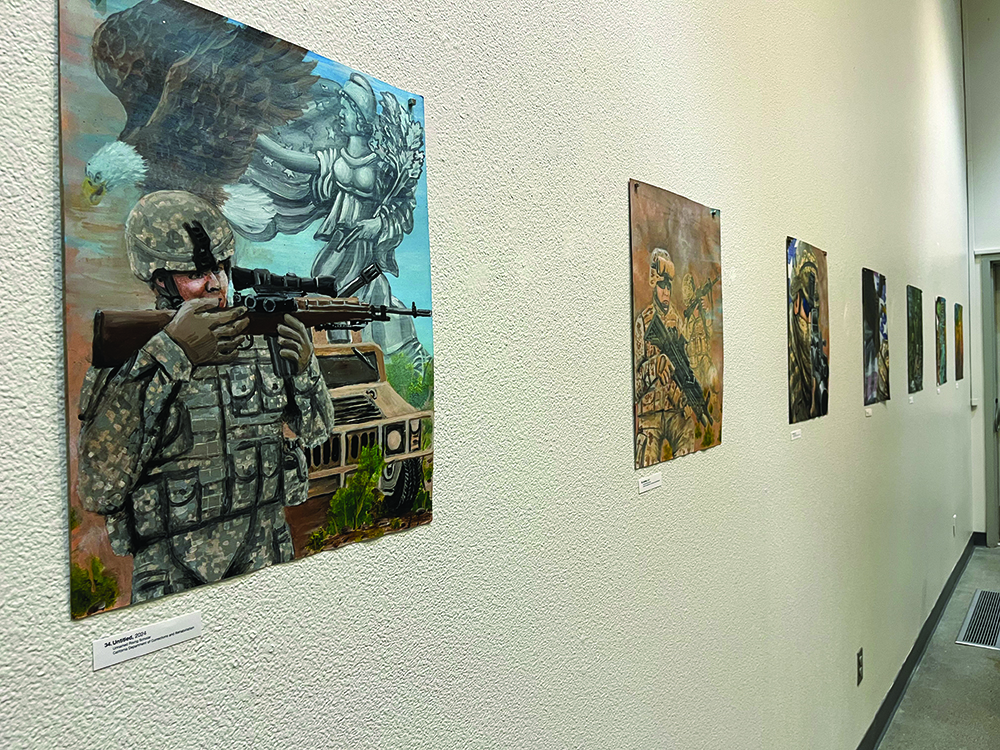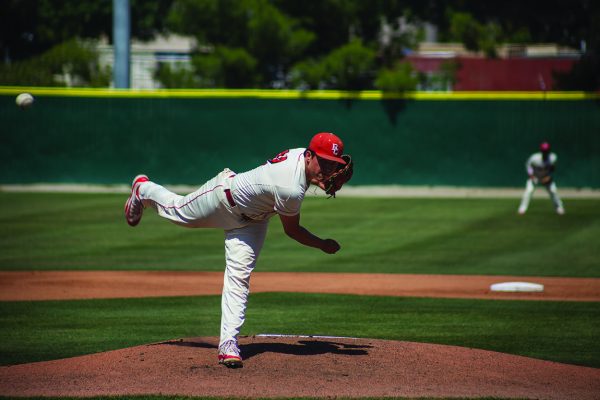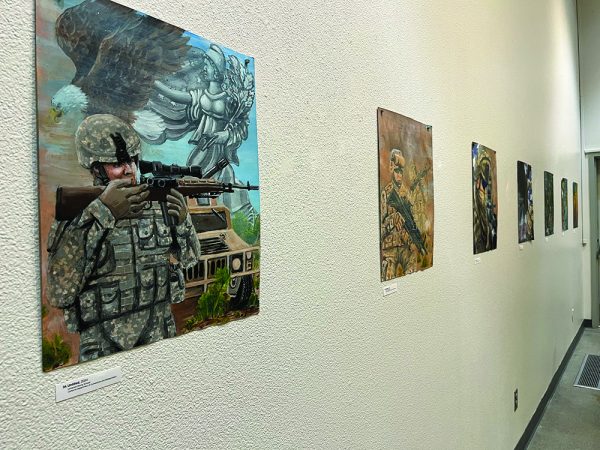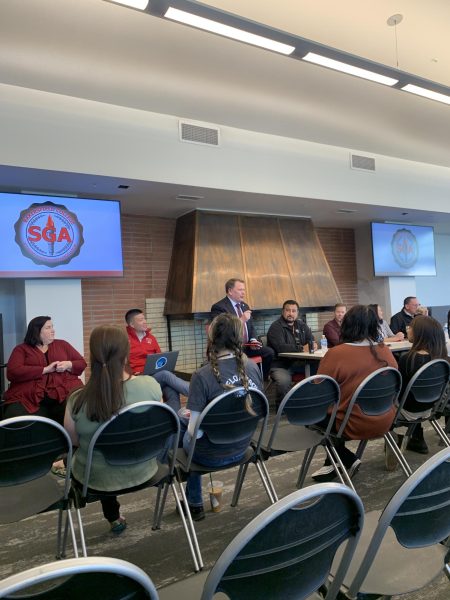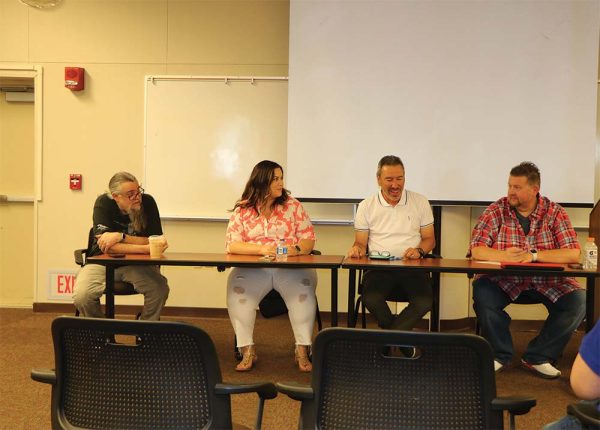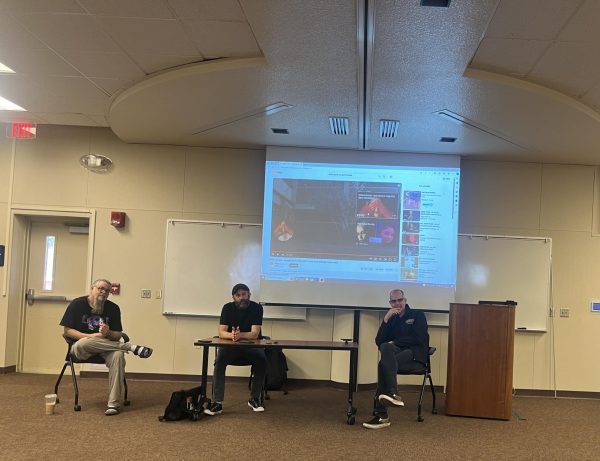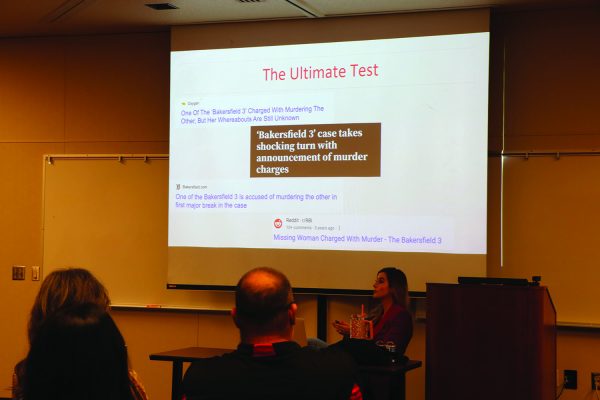Public Safety at Bakersfield College Conducts an active shooter training
Public Safety Training Associate Professor Brent Burton (far left) and Bakersfield College Public Safety Director Chief Christopher Counts (far right) teaching BC students and staff how to stop the bleeding of a major arterial wound in the Levan Center, on March 6.
March 14, 2019
“Run. Hide. Fight.”
Bakersfield College Public Safety Director Chief Christopher Counts discussed to students, faculty, and staff on how to respond to an active shooter emergency in the Leaven Center, on March 6.
Counts first described the history of past active school shootings in the U.S. from the past two decades such as; the Northern Illinois University Shooting, that killed five and injured 16 in 2008. The Westside Middle School Massacre, an 11 and 13-year-old that killed five in 1998. And one of the most recent massive school shootings: the Stoneman Douglas High School Shooting, that left 17 dead early last year.
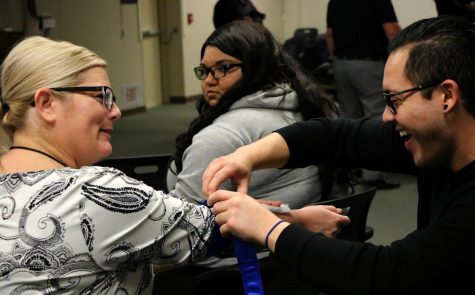
BC faculty’s Michelle Burton (left) and Bryan Lainex (right) learning how to stop the bleeding from an initiate basic bleeding control training in the Levan Center, on March 6.
“These guys don’t wake up and [decide to kill] one morning… They’re planning ahead,” Counts said.
“One thing past shootings all have in common,” Counts said, “is that someone knew of the possible situation before it occurred. Either from social media, commenting to a friend, but no one warns anyone or taken it seriously.”
“If you see something, say something.”
Counts said people need to break the culture of silence.
Counts also expressed if an individual happens to be in an active shooting situation, they just realize they cannot negotiate with the shooter.
That they are likely there to kill as many people as they can.
“To take action against an active shooter is to fight”, Counts said.
The advice given to fight is meant to disrupt the shooter’s plan.
Overwhelm the shooter with group of people. At a point it is okay to be angry and fight back, and “ask yourself… will I be a sheep or a dog.”
Active shooting can occur anywhere across the nation Counts said and explained the “what if game.”
It is a situation that runs through the head first in case a real situation ever occurs.
The example Counts gave is if an individual is in their work office or in a classroom and hear the possible sound of gunshots.
“What do you do?”
Is there a place one can hide? Escape? Or something to fight with?
“Be aware… know the nearest exits in any facility. There is no need to always feel paranoid but there are many things to think about,” Counts said.
“If a person has a major arterial wound, they can bleed to death within three minutes,” said Public Safety Training Associate Professor Brent Burton.
The way to stop bleeding is to initiate basic bleeding control (B-Con). Burton explained to the group that B-con attempts to control the bleeding for 15-20 minutes until first responders arrive on the scene to provide advanced life-saving measures and if a shirt the only thing is an available thing, use it.
After explaining how to stop the bleeding, Chief Counts and Burton went around the room and showed how to use the B-con on one other.
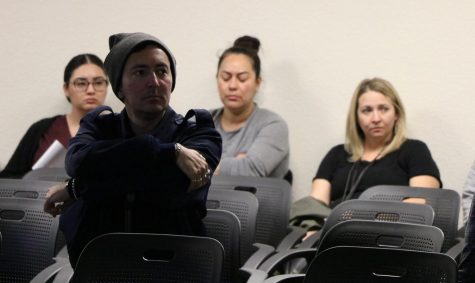
Bakersfield College’s students, staff, and faculty listening to Bakersfield College Public Safety Director Chief Christopher Counts describing the history of past active school shootings in the U.S. from the past two decades, on March 9.
BC students Alma Higuera and Justina Alston both thought the training was useful in future possible situations.
“Now I feel more informed on what to do if something like this may happen,” said Higuera.
The Public Safety Department had been practicing a variety of safety training to students and faculty at BC for the last nine years and will continue to do so future the semesters.


